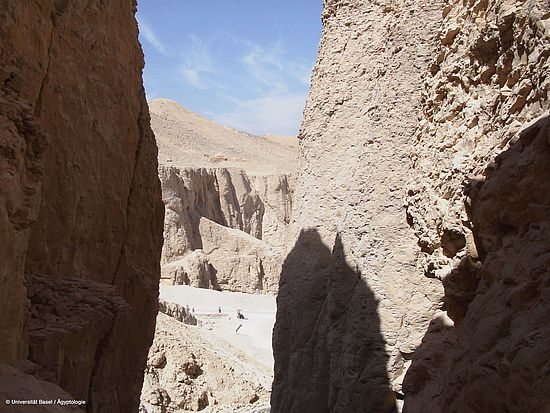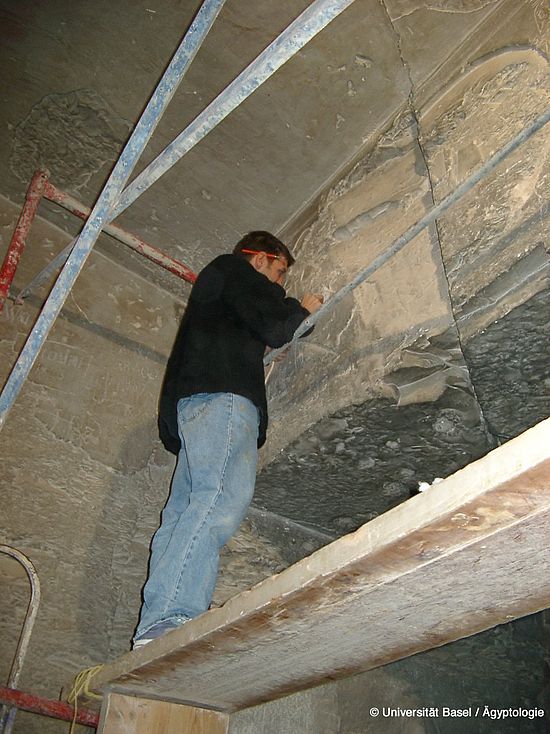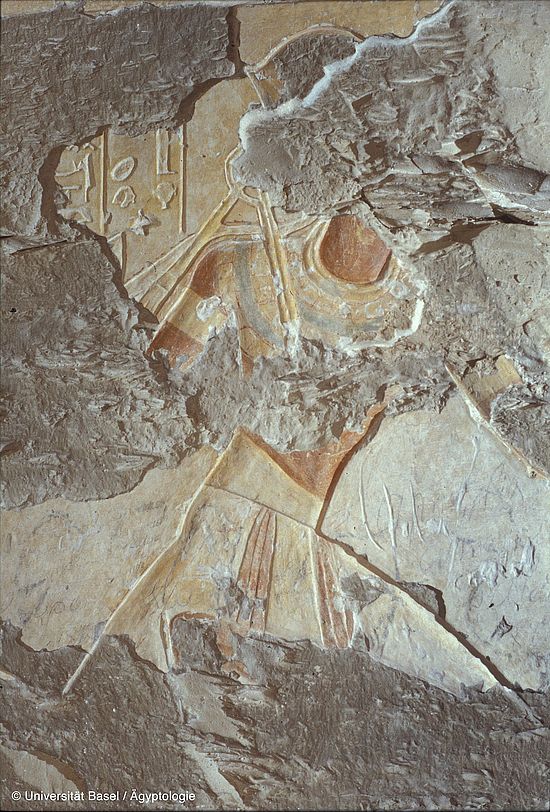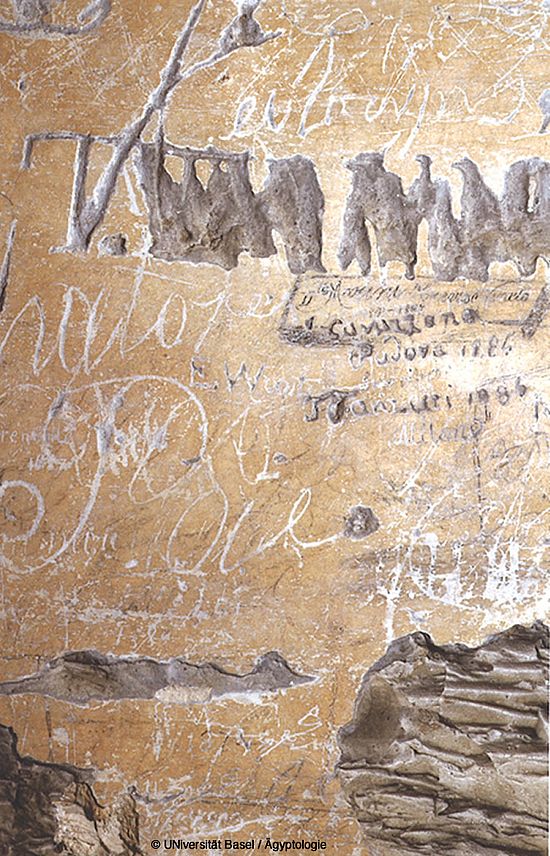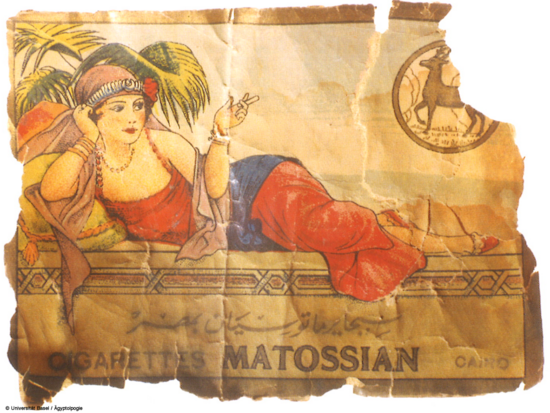Multiple traces of modernity
The project "MISR: Mission Siptah - Ramses X." is committed to a paradigm shift within archaeological research. Today, it is no longer sufficient to dig for treasures or to focus only on the royal burial. It is the spaces in between, so to speak, that must be considered. This means the society of craftsmen and artists dependent on the king and their traces, as well as the terrain in the vicinity of a royal tomb that holds insights. The examination of large masses of unspectacular debris allows the royal tombs of the New Kingdom to appear in a new light, their context becomes tangible. They are no longer individual objects, but parts of a complex entity: the Valley of the Kings with a topological, chronological and socio-historical dimension.
Zur modernen Geschichte des Tals der Könige, 10
Traces of the modern past include, on the one hand, found objects (see below), and, on the other, alterations such as wear and damage, whitewashing and deposits, scribbles, and fixtures. A striking example of the latter category is Howard Carter's power plant in the tomb of Ramses X.
All archaeological activity produces change, even when done to protect objects. Material can be removed, features can be filled in, and objects can be protected with structural measures (Figs. 2-3):
"The existing modern wooden roof in KV 18 above the Corridor A, which has been built by H. Carter in 1902 to protect the first electricity installations for the Valley of the Kings, was covered by us by a metal roof of corrugated iron. The old wooden roof of Carter had suffered from the occurring rains and sun and wind over the time span of more than 100 years. The roof was no longer safe and dust could enter into the tomb between the wooden boards. The new roof was built over the old wooden one, which is visible now only inside the tomb of Ramesses X. Between the old and new is a space of circa 20 centimetres to allow the air to circulate and this space also builds an isolation layer for the old roof and the tomb. The new construction with a few wooden beams and the corrugated iron sheets is light and dense. The wooden beams are fixed on both sides with the modern stonewalls outside the tomb. No rainwater or dust will penetrate into the tomb through the ceiling. In the front an iron pipe was installed in order to lead the rainwater outside the tomb of Ramesses X. The silver colored metal was painted on the outside with a mixture of sand, hiba and glue. Three thin layers of this mixture were added on the iron surface. The color of the roof on the outside is corresponding to the surface colors of the mountain in the Valley of the Kings and the metal surface is not shining when seen from above. In the coming season 2009 a long-term check for this pigment mixture will be made to be sure of the resistance against the wind and the heat of the summer."
Report on the 10th campaign 2007/08
Cleaning dirt (Figs. 4-5) reveals new things, such as visitor inscriptions from ancient and modern times (Fig. 6).
And tourists also leave traces, especially through carelessly discarded or lost objects, be they cigarette packets (Fig. 7) or picnic leftovers such as chicken bones.
The objects date mainly from the Belle Époque (1871-1914), the period of the emergence of tourism. Visitors came mainly from French-English and German-speaking countries.
Of particular interest to today's archaeologists are testimonies of their former colleagues. Among them, besides the names Garstang and Weigall preserved on paper, is certainly the sketch of the ground plan of an excavation house, probably by Theodore M. Davis.

Publications on this topic
- E. Peintner, Uncovering and Conservation in Corridor A of the Tomb of Ramses' X., 13-15,
- J. Horn / R. O. De Keersmaecker, Visitor Inscriptions in Corridor A of the Tomb of Ramses' X., 17-49.
- E. Alzinger, The Electrical Installations in Corridor A of the Tomb of Ramses' X., 51-53,
- A. Dorn / E. Paulin-Grothe, Excavations in the Valley of the Kings 1998-2008: excavation areas and traces of earlier excavators, 55-74.
- R. Jaggi, Updating the history of the Valley of the Kings: modern finds, 75-125,
- M. Doll, Bones, tombs and tourists: animal bone finds from the Valley of the Kings, 127-177,
- A. Honold, Das Andere (in) der Moderne: Ägypten im Blick deutschsprachiger Schriftsteller, 179-188, in: Zur modernen Geschichte des Tals der Könige. Conference in Basel, September 1, 2007, with contributions on the tomb of Ramses X. (KV 18) and on finds from modern times, ed. by Hanna Jenni (Aegyptiaca Helvetica [AH] 25), Basel: Schwabe 2015.
- T. Schneider, A French Painter in the Valley of the Kings: Alfred Arago, in: Bulletin of the Association for the Study of Travel in Egypt and the Near East [BASTENE], no. 17, Autumn 2003, 21f.
Quick Links

